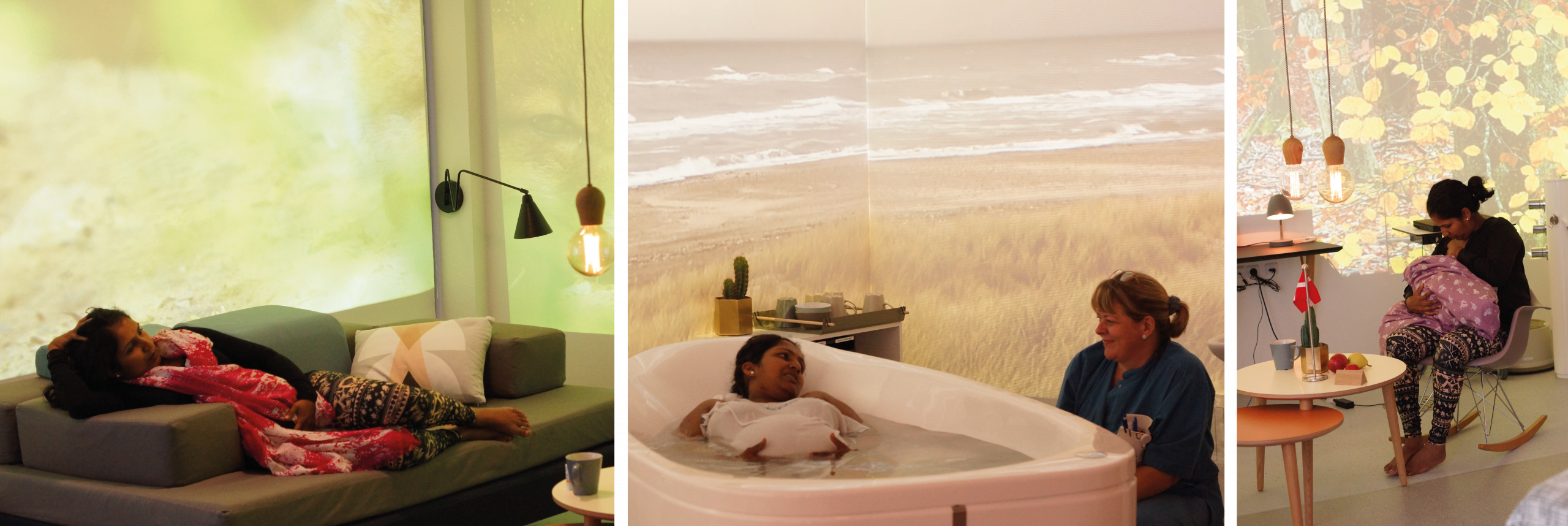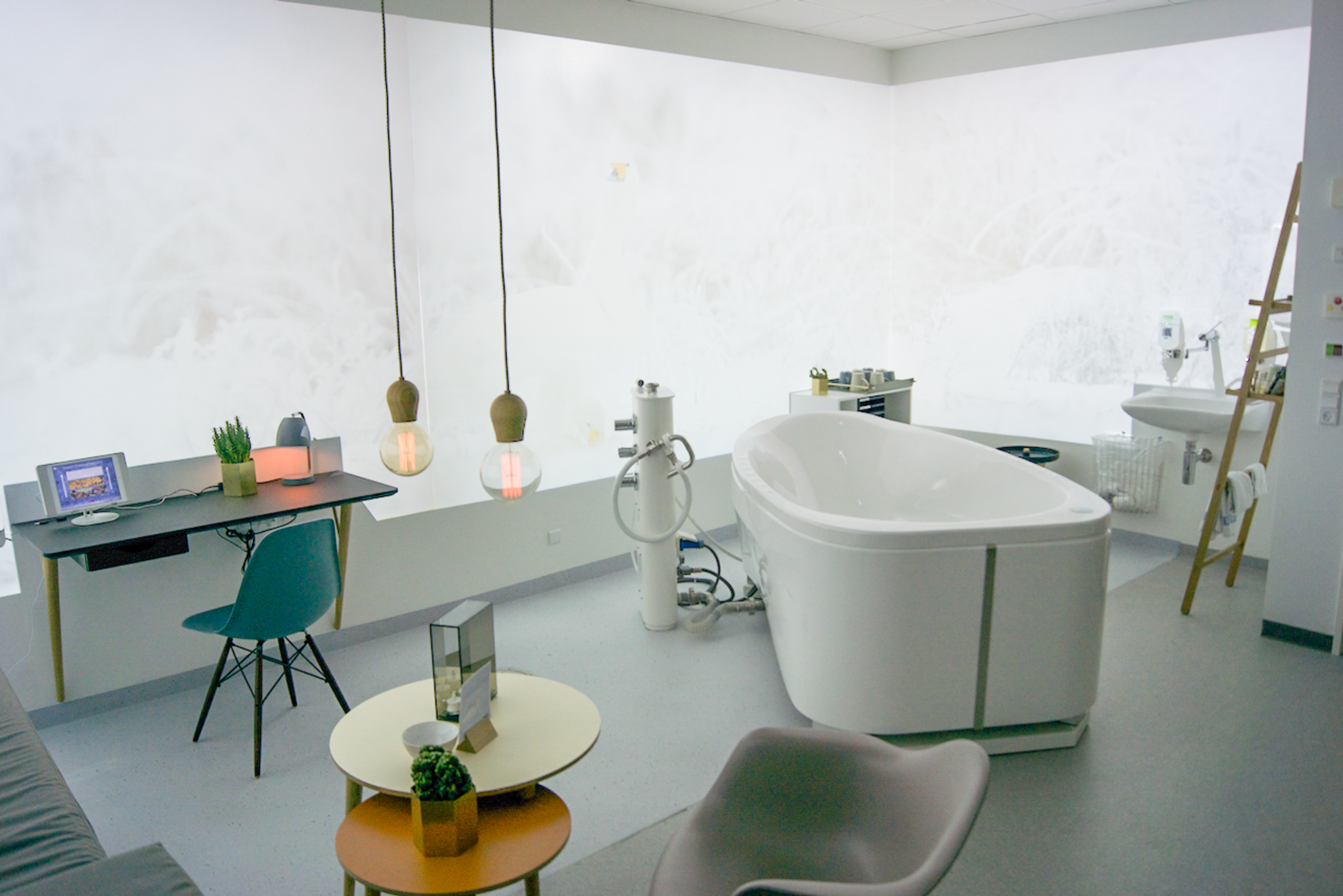
The Future Delivery Room represents a pioneering approach to birthing environments, crafted as an innovative prototype guided by principles from evidence-based healthcare design [5] and healing architecture [3]. It was aimed at enhancing the experience of childbirth through the promotion of oxytocin production, presenting strategic sense stimuli inspired by research from the Snoozel [37]. Recognizing nature’s innate ability to soothe and comfort [31], carefully curated moods from nature were blended with adaptable architectural principles. This enabled the room to fluidly adjust to the shifting rhythms of the day and cater to the unique needs of each family. The goal was to create an environment where families felt relaxed, embraced, and at home.
“The Future Delivery Room” was a pilot and research project developed in response to the hospital’s move into a new location in Gødstrup. The visionary team of midwives, led by Midwife Ann Fogsgaard, seized the opportunity to venture into the realm of radical innovation and explore how different architectural and artistic elements could support the “act of care” and “act of treatment” in a futuristic delivery room.
This particular project holds great significance for studio poēsís because it marks the beginning of founder Esben Bala Skouboe’s involvement with the healthcare sector. Specifically, it began when his wife and he welcomed their firstborn, Olivia, on July 1, 2014. This encounter was groundbreaking as it brought together aesthetic idealism and research with a clinical, highly efficient, and professional healthcare system, it also became the beginning of a long productive collaboration with Nature Photographer Morten Hilmer.
During one year several studies were conducted to review the potentials and barriers for the rooms, during the year more than 80 tours from national politicians to international guests. The delivery room was showcased as a great example of new and visionary healthcare design. See more about the clinical use of the room here.
“If we can get the woman to relax, we can boost the natural production of oxytocin. This might help reduce the amount of medication, surgeries, and labor interventions, and it might further create a better work- and patient environments.”

“The design of the birthing room can thus empower the fathers to take a more active supporting role in the birth process. The capacity to stimulate positive sensory experiences can raise awareness of the atmosphere – helping the fathers to be active co-creators of the atmosphere, which again influences the way they can act during the birth process and reflect upon the event. An atmosphere cannot be designed (Sumartojo and Pink, 2018). However, by viewing atmospheres as “tuned spaces” that can influence patients and their relatives’ perception, co-creation and agency in the situation, the atmosphere approach can be useful in designing new hospital rooms.”


“Working with external specialists has been a key for us to be able to imagine this type of space, this is beyond what we could have envisioned, and we are very proud.”
Head of Midwifery Ann Fogsgaard

“This is the room where it all started – during Olivia’s birth, 2014. This was one of the greatest moments in my life, and here I was in a delivery room in a Danish hospital… stainless steel rolling table, a recycled bathtub from the local slaughterhouse, a full workstation, and laminated stickers everywhere.
To kill time we discussed exciting architectural theories, ‘sense of belonging’, ‘biophilic design’, ‘Danish design traditions’… we were dreaming… and then amazing little Olivia was too… The day after they called me up – and the rest is history.”
Father and Architect, Esben Bala Skouboe

During the experiment, ethnographer Birgitte Folmann did a study of the father’s role during birth. After the labour the father was asked if he had any photos that he would like to show to share his birth experience, this image was one of them. Read more about how the responsive space improved the family dynamics in the article: ” Based on a phenomenological study it shows how atmospheres are experienced in a new birthing room intended to stimulate the senses in a comforting and equanimity-evoking way, and especially how the fathers attuned themselves to the situation of being present at the birth of their new-born infant.” [8]

Studio Poesis

We use necessary cookies to make our site work. With your consent, we may also use non-necessary cookies to improve the user experience and analyze website traffic. By clicking “Accept”, you agree to our website’s use of cookies